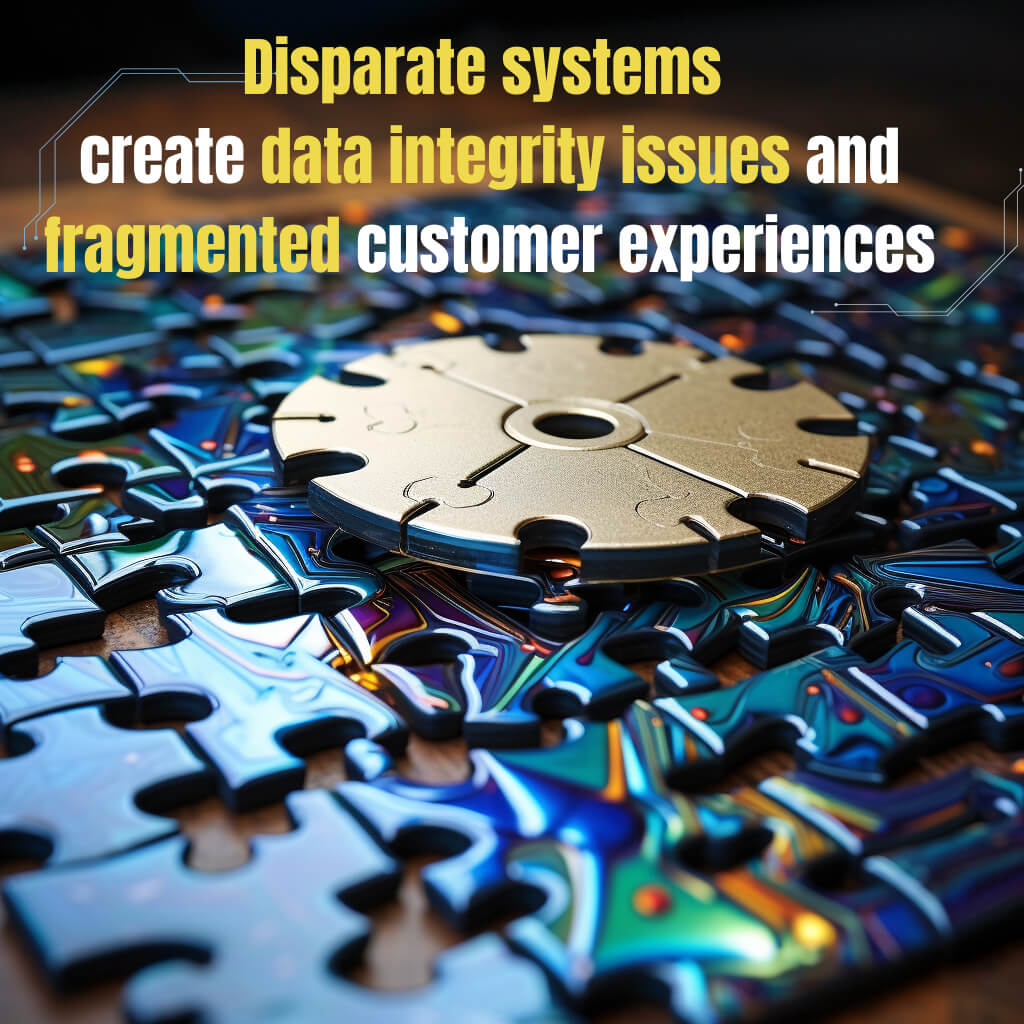
Why IT leadership should advocate for investing in new technology to reduce silos and maximize business performance
As Chief Information Officers and other IT leaders, we often find ourselves constrained by the very technology infrastructure we’re responsible for managing. Multiple fragmented “systems of record” have been allowed to proliferate within most organizations, creating numerous isolated data “silos” that ultimately serve as barriers to productivity, innovation and growth.
While maintaining status quo systems may seem like the safe operational choice in the short-term, the hidden costs of technological stagnation are perilous to any business in the digital era. Siloed data leads to inefficiency, poor customer experiences and missed opportunities. Unfortunately, Executive leadership doesn’t always appreciate the critical role technology plays as a business accelerator.

As stewards of our companies’ technological foundation, IT decision-makers must proactively influence C-level perspectives through compelling data and visionary strategies. We can help shift mindsets from viewing IT as purely an overhead expense to acknowledging its potential as a powerful strategic lever. With a consolidated digital core and integrated data architecture, businesses can break down longstanding roadblocks and maximize performance on all fronts.
In this post, I’ll outline the numerous problems caused by antiquated technology silos. I’ll also explain why IT leaders should advocate boldly for investments modern infrastructure as a force multiplier – not just maintenance costs. With the right education and demonstration of tangible benefits, we can help steer executive budgets towards strategic innovation rather than fragmented status quo. It’s time to break through barriers of the past.

The Hidden Costs of Technology Silos
Most companies accumulate disconnected application silos gradually over time as different departments purchase point solutions independently to solve immediate needs. While each system may work well in a silo, managing many isolated data stores becomes complex and inefficient at scale.
Some typical problems encountered:
Duplicate/Inconsistent Data
The lack of a unified data model means the same core entities (customers, products, invoices etc.) exist in different states across silos. Personally identifiable information, addresses or even simple attributes become corrupted as they’re manually re-entered or not propagated properly between systems.
Manual Re-entry/Reconciliation Waste
When data must be entered in one system and then re-keyed into another relevant silo, duplication of effort costs both time and introduces error risk. Employees also waste cycles reconciling discrepancies between source systems rather than focusing on value-adding tasks.
Suboptimal Customer Experiences
With fragmented customer profiles and interaction histories dispersed across CRM, marketing automation, billing and support platforms, consistency and personalization suffers. Sales, service and success teams lack holistic views into accounts.
Lost Growth Opportunities
Disjointed data prevents real-time cross-departmental insight discovery. Marketing is limited analyzing campaigns in isolation from purchase behavior. Product teams lack understanding of full user journeys. New revenue streams remain untapped.
Inefficient Business Processes
Operational workflows span multiple systems rather than flowing digitally end-to-end. Manual handoffs and redundant approval steps interrupt flow. Process optimizations are constrained by legacy integration limitations.
Bureaucratic Governance Burdens
IT struggles to maintain numerous heterogeneous platforms simultaneously. Manual integration projects siphon resources from innovation initiatives. New solution adoption requires navigating political impediments across silo stakeholders.
The inherent complexities of technology debt accumulate substantial hidden costs that dwarf annual IT budgets yet remain difficult to measure and convince executives. It’s time for IT leadership to bring these ramifications to the forefront.

Positioning Technology as a Strategic Multiplier
Rather than view IT simply as an operational bill to minimize, forward-thinking CxOs acknowledge its potential for transforming entire business models. With consolidated information architecture and integrated workflows, companies can break down silos inhibiting growth.
Some ways technology becomes a business force multiplier when barriers are removed:
Connected data and AI-driven insights empower smarter, faster decisions across all roles from the C-suite to frontlines
Agile processes accelerate innovation, reduce bottlenecks and streamline operations for heightened productivity
Personalized omnichannel experiences deepen customer loyalty and maximize lifetime value through 1:1 engagement
Scalable platforms adapt quickly to changing conditions and capture emerging opportunities ahead of competition
Analytics uncover hidden patterns to optimize everything from product development to supply chain management
Automation frees human talent from manual tasks toward higher impact customer-facing activities
Digitization fuels new revenue streams and entirely disruptive business models that were previously unimaginable
IT leaders must demonstrate ROI not just in financial metrics but by quantifying impacts in these less tangible yet critical areas like customer satisfaction, employee engagement and market agility. If properly leveraged, consolidated technology becomes the connective tissue maximizing performance of an entire organization.

Convincing Reluctant Leaders Requires Bold Influence
Transforming ingrained perspectives takes courageous advocacy backed by compelling evidence. As technology stewards, here are some tactics for IT leadership to boldly influence strategic investment:
Quantify hidden costs of silos in dollars and lost opportunities through metrics like manual Effort, errors, process cycle times etc.
Illustrate what’s possible through customer or internal pilot programs integrating isolated data/workflows.
Benchmark technology spend as % of revenue against industry leaders emphasizing IT as an investment not cost.
Link digital strategy directly to business objectives like market share growth, retention improvements or revenue goals.
Enlist influential cross-functional allies to demonstrate silo impediments outside IT functions.
Highlight leading platforms as reusable foundation rather than one-off solutions to ease budget concerns.
Align technology roadmap with organizational priorities to gain executive sponsorship for change.
Communicate concise vision for consolidated systems breaking down departmental walls through integrated data.
Proactively educate leaders on competitive threats from newer, more agile digitally-native firms.
With patience and persistence, even pragmatic executives will recognize how technology evolves from a necessary expense into strategic fuel propelling the entire business forwards. The opportunity is too great not to make the case boldly through collaborative influence.
In Summary
By legitimizing technology’s role as a growth catalyst rather than cost center, IT leaders can inspire investments transforming antiquated infrastructure. With consolidated digital platforms connecting formerly isolated information flows and processes, organizations unlock immeasurable possibilities.
It’s time for Chief Information decision-makers to break down barriers of the past by influencing strategically and demonstrating technology’s true potential as a force multiplier. Outdated silos held businesses back, but the future remains bright for those who make bold moves integrating innovation into the core of their operations. Our role becomes guiding their journey of progressive digital transformation.
Are you an IT Director or IT Manager? Apply to be on the show: https://www.dissectingpopularitnerds.com/application/


Recent Comments